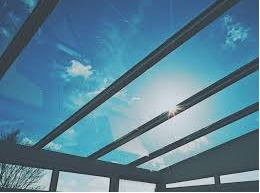Compared to regular glass, tempered or toughened glass is extraordinarily stronger and safer. When eventually cracked, it bluntly shatters into tiny pieces rather than dangerous shards. Upgrading older glass to the latest tempered versions greatly improves building, vehicle, and product safety while enabling lighter, sleeker designs impossible with annealed or laminated glass. Here we will learn the importance of tempered glass for safety and efficiency.
Why Tempered Glass is Better
Tempered glass is about 4-5 times stronger than annealed glass. It is produced by a heating and rapid cooling process that creates balanced internal stresses, allowing it to withstand much higher loading and impacts from both side pressure and temperature differences. The tempering process also causes it to safely “dice” into small cubes when it eventually breaks or cracks.
For these reasons, many jurisdictions’ building codes and safety standards now recommend or require tempered glass to be used in locations with a high risk of human impact, such as doors, sidelights, structural glass fences and railings, vehicle glass, and more.
Safety Benefits
There are numerous safety benefits to tempered glass. The most significant advantage is how it breaks safely compared to non-safety glass. When shattered or cracked, tempered glass immediately crumbles into small, relatively harmless pieces. This helps prevent severe cuts from sharp glass shards. Blunt cube pieces are also less likely to cause deep puncture wounds. The dice pattern breakage means the glass pieces interlock well, helping the glass remain in the opening even when cracked.
This reduces the risk of people accidentally falling through or accessing broken glass openings before repair. Temperature glass significantly improves safety for windows, doors, partitions, furniture, appliances, and vehicles.
Efficiency and Performance
Beyond safety, tempered glass also provides efficiency and performance benefits compared to annealed or laminated glass:
- Increased strength and impact resistance
- Withstands temperature differences and thermal stresses
- Thinner than laminated for weight savings
- Better optics and clarity
- Smooth edge truncation options
- Customizable for insulation, security, aesthetics
Architects, automakers, and product designers rely on these advantages to create structures and items that are impact-resistant, durable, and high-performing while still being slim and lightweight. Ultra-strong glass allows more open, transparent building designs and thinner, larger vehicle and electronics glass components, which are impossible with regular glass types.
Signs Replacement is Needed
Some visible signs and symptoms indicate when older glass needs to be replaced with new tempered glass:
- Visible cracks, scratches, chips or dings
- Cloudiness, bubbles, discoloration indicating seal failure
- Failure during product testing and quality checks
- Glass breakage history or repeated cracking
- Building code or insurance requirements updating
- New improved tempered glass options available
- The desire for better noise control, security, solar performance
Monitoring glass for any cracks or imperfections and replacing it as soon as issues appear ensures new tempered glass can prevent safety problems before they occur.
Maintenance Tips
To maximize the working life of tempered glass once installed:
- Use soft cleaning materials like rubber squeegees to avoid scratches
- Clean on a regular schedule with approved glass cleaners
- Never use abrasive pads or powders
- Inspect for cracks, chips, and seal failure indicators
- Be aware of glass strength limitations
- Get expert help from AIS glass for repairs as soon as any concern appears
With proper care and maintenance, today’s high-quality tempered glass provides lasting safety, optical clarity, strength, and durability, increasing its useful lifetime.
Conclusion
Upgrading older glass to the latest tempered safety glass technology provides substantial safety, efficiency, and performance improvements for buildings and products people use daily. Tempered glass is stronger, more damage-resistant, and breaks safely to help prevent serious injuries. Architectural, automotive, and consumer product designers rely on tempered glass to enable lightweight yet durable designs, which is impossible with regular annealed or laminated glass. Moreover, if you’re looking for tempered glass replacement service, getting help from AIS Glass would be best.

